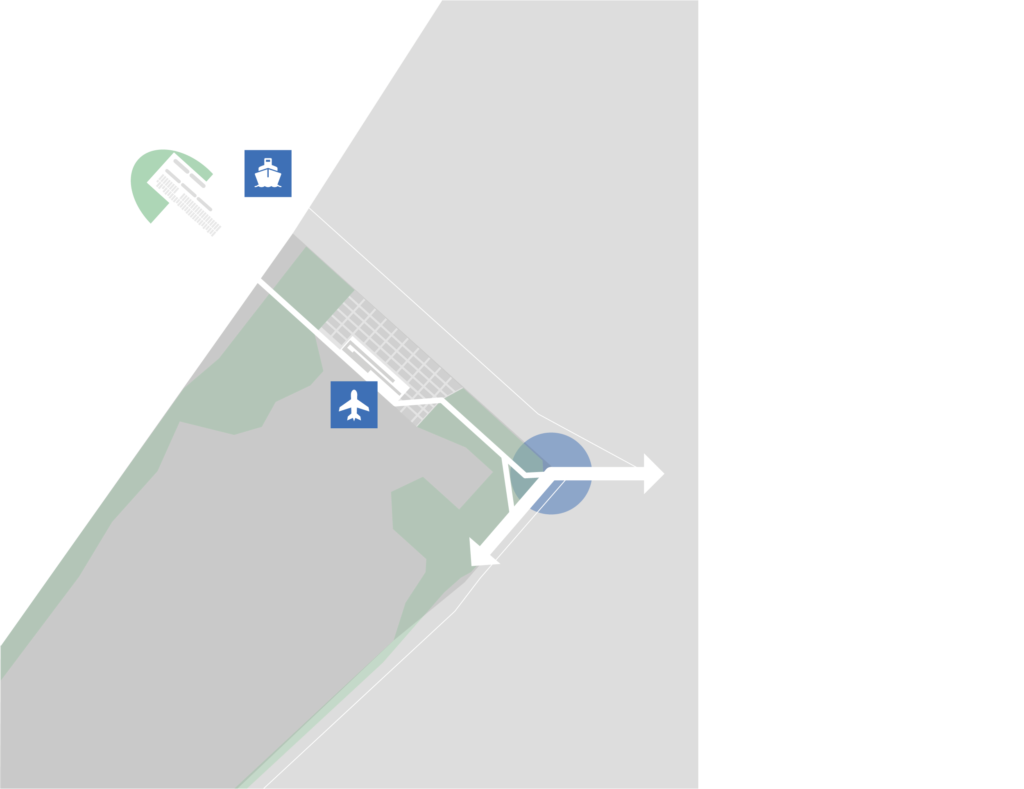4
connectivity
PALESTINE EMERGING addresses infrastructure under Palestinian jurisdiction as well as systems that integrate Palestine with the broader region.
URBAN DEVELOPMENT, MOBILITY
SURFACE TRANSPORT CONNECTIVITY
PALESTINE EMERGING supports a comprehensive multi-modal transport network for the West Bank and Gaza Strip along with a phased development strategy.
We anticipate the Surface Transport strategy will evolve over three time frames and related scales:
Short Term/ Micro-Scale
(within the West Bank and within the Gaza Strip)
Medium Term/ Meso-Scale
(between the West Bank and Gaza Strip)
Long Term/ Macro-Scale
(between the West Bank/Gaza Strip and the Region)
The Surface Transport network includes a National Territorial Corridor between the West Bank and the Gaza Strip and major ‘back-bones’: North-South multi-modal spines in both Gaza and the West Bank (for rail + road).
The network also includes diffused multi-modal infrastructure throughout the West Bank and Gaza Strip to connect disjointed fragments of the existing road network. This will incorporate public transport networks, including BRT systems, to connect Bethlehem, East Jerusalem, Gaza City, Hebron, Nablus and Ramallah. High-frequency services connect with the Territorial Corridor and North-South multi-modal spines at designated terminals. Low-speed infrastructure, including cycling highways and pedestrian thoroughfares in both Gaza and the West Bank, knits together communities and moderates demand on road networks.
To boost freight and logistics capacities, the surface transport network also incorporates expanded facilities at border crossings.
SEA AND AIR CONNECTIVITY
Economic viability for Gaza and the West Bank depends on trade with regional and global markets. PALESTINE EMERGING recognises the strategic importance of developing primary infrastructure corridors to support regional and international trade.
In the short term, rebuild the Gaza Fishing Port and upgrade infrastructure to accommodate
‘Roll-On/Roll-Off’ landings on an interim basis. Link the Fishing Port to secondary rgaza isoads and the High-Capacity Spine.
Establish a short-range, electric vertical take-off and landing (eVTOL) Feeder Service to carry passengers from Gaza to air hubs in the West Bank (e.g. the former Jerusalem Airport) and Amman International Airport; this will be an efficient, sustainable, and cost-sensitive link to the global air network and a ‘leapfrog’ opportunity. Develop the Gaza Airfield at the northern end of Gaza to accommodate short-haul services. Integrate the airfield with Gaza Industrial Port, Gaza High-Capacity Spine, and the Gaza-West Bank Link to create a quad-modal transport hub.
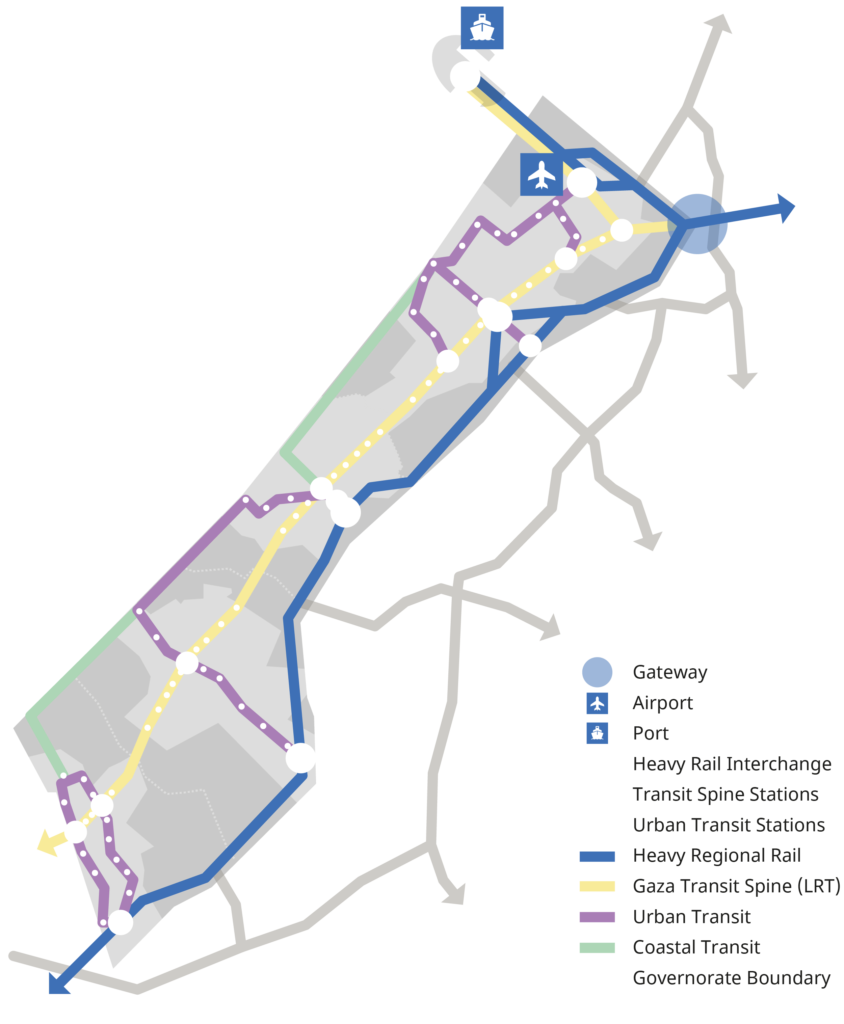
GAMECHANGER
GAZA / WEST BANK CORRIDOR
A strategic link between northern Gaza and the southern West Bank will enable dependable movement of goods and eventually people between these two areas.
The Gaza/West Bank Corridor will be established over several phases:
SHORT TERM
Bonded containers on open roads between Gaza and the West Bank. Focused on delivering humanitarian aid (primarily food and medicine).
MEDIUM TERM
Dedicated corridor link. Potential technical systems include segregated road or rail, tunnels, high-speed maglev, etc. Initially focused on cargo only.
LONG TERM
Dedicated corridor link. System to carry passengers and cargo. Domestic Travel Scheme for passengers between Gaza and the West Bank allows free movement (without border controls).
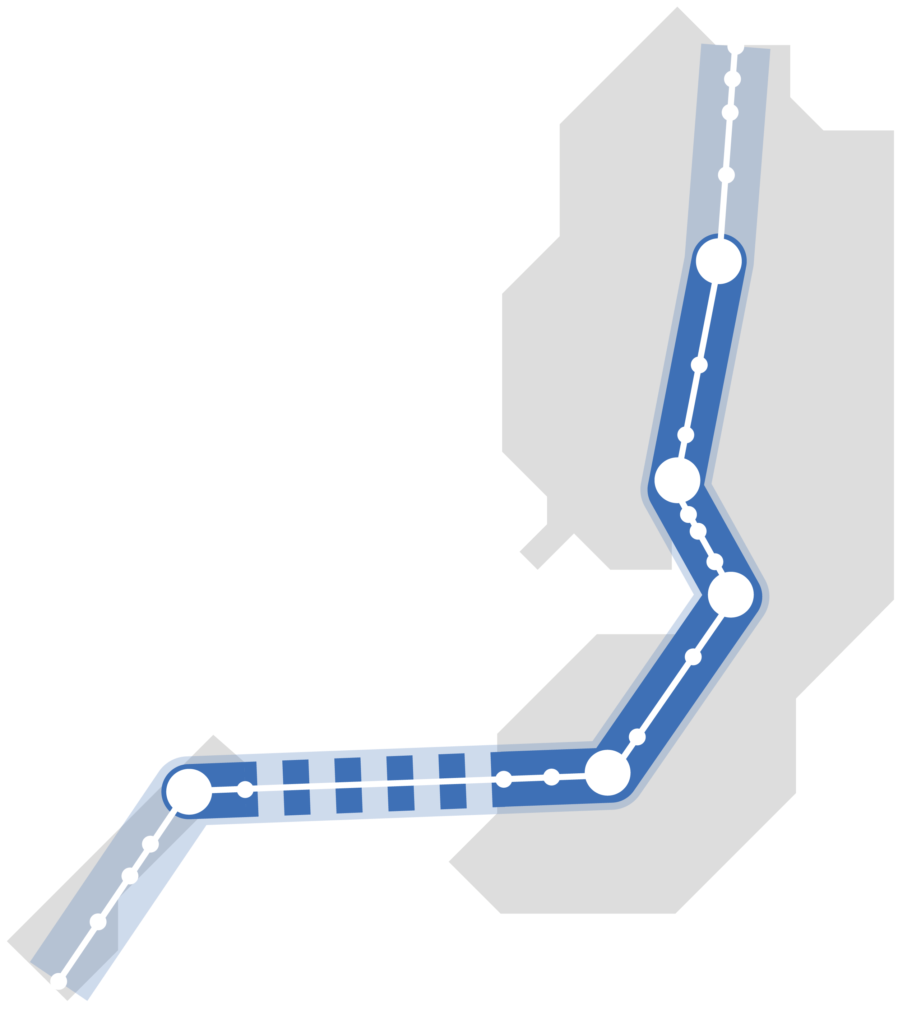
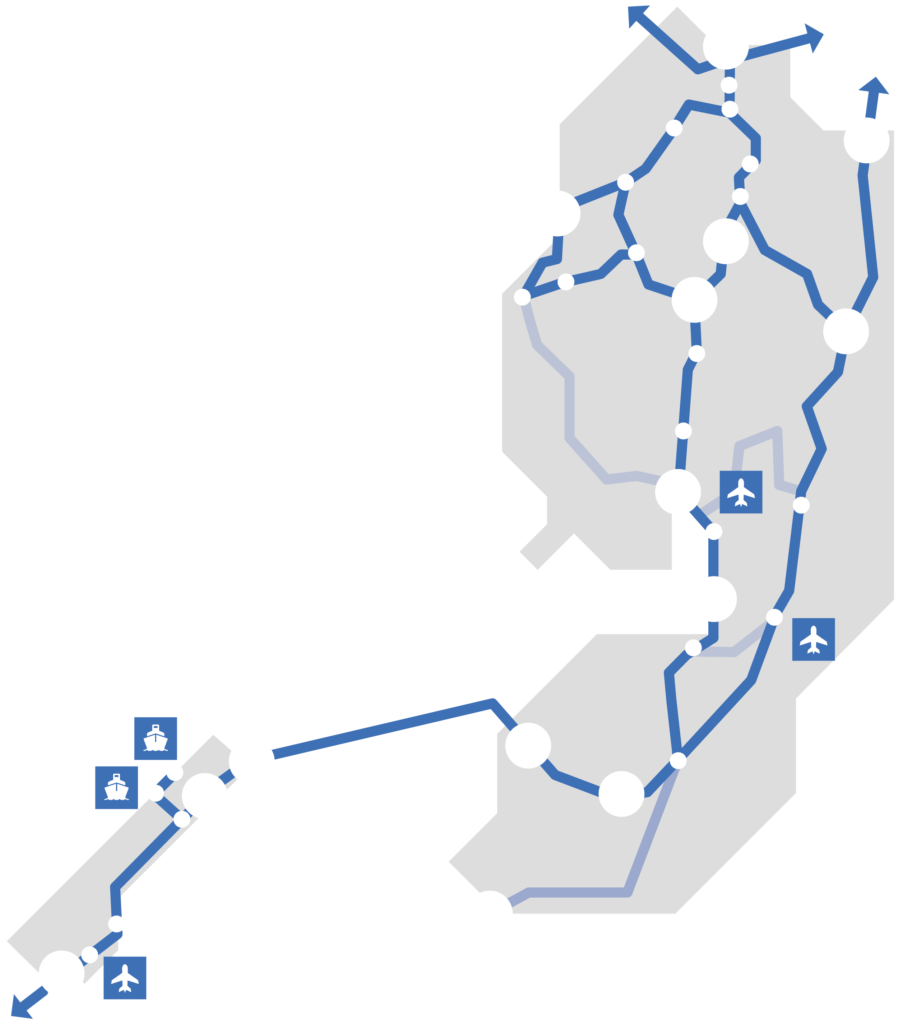
Palestine Ministry of Transport (2016).
The Gaza-West Bank Corridor will be a Palestinian project but located on Israeli territory, for exclusive use by Palestine. Previously-discussed long-term lease arrangements will ensure the corridor is sealed for Israeli-security purposes. There will be design provisions for a potential intermediate stop that could be used as part of a common economic zone or for an interchange between entities. The corridor will extend with incremental stops into the West Bank.
Mobility corridors between two areas over a third-party area exist in many places. There were dedicated corridors between West Germany and West Berlin when Germany was divided.
Switzerland has a corridor to the Swiss part of Basel/Mulhouse airport situated entirely on French territory without interference by French authorities.
Russia-Kaliningrad has a sealed train agreement.
Vennbahn railway, originally built across what used to be German territory, is now entirely within Belgium but still maintains five small German exclaves.
FUTURE REGIONAL EXPANSION PLANS
The Gaza-West Bank Corridor potentially connects to India, UAE, Saudi, Jordan, and Europe via the proposed India – Middle East – Europe Economic Corridor (IMEC).
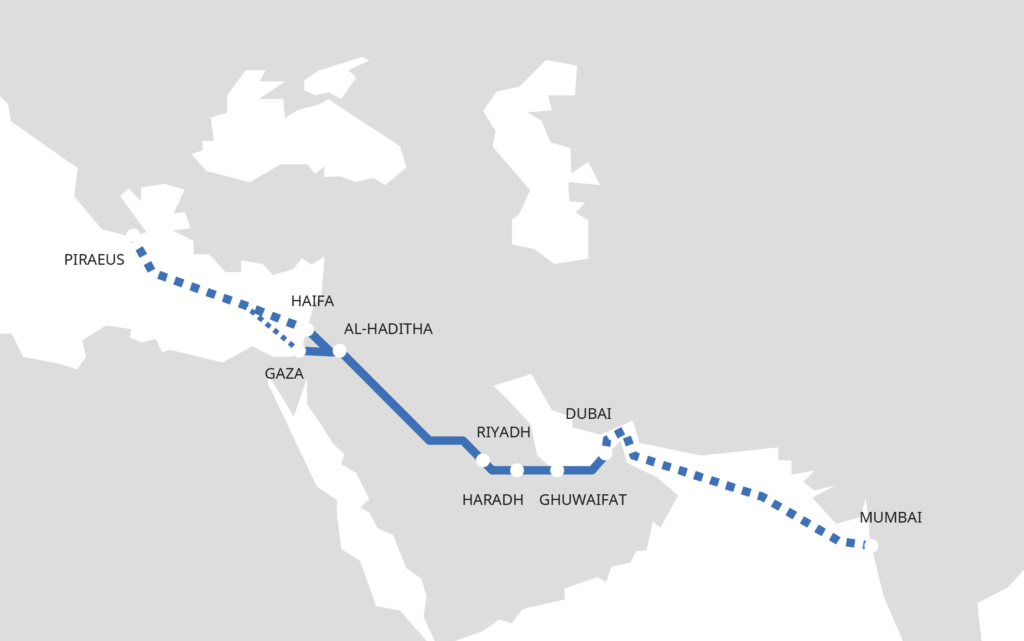
Ecopeace Middle East (2024).
India-Middle East-Europe Economic Corridor (IMEC)
IMEC is a planned economic corridor that aims to bolster economic development by fostering connectivity and economic integration between Asia, the Arabian Gulf and Europe. The proposed corridor would run from India to Europe through the United Arab Emirates, Saudi Arabia, Jordan, Israel and Greece.
The project was launched to bolster transportation and communication links between Europe and Asia through rail and shipping networks and is seen as a counter to China’s Belt and Road Initiative and would also create comparative advantages against transits through the Suez Canal. The memorandum of understanding document has already mapped out the potential geography of a corridor.
GAMECHANGER
GAZA ISLAND PORT
Develop a deepwater port on an artificial island off the northern end of Gaza, not to be confused with any other proposals, e.g., to build an artificial island in the Mediterranean Sea or a temporary humanitarian port. Unlike an inland port, extensive research has suggested that an island port’s offshore location would reduce dredging requirements and minimize impact on the sensitive beach waterfront. The Island Port will include logistics areas for containerized shipping, an LNG terminal, cruise-ship berths, a commercial marina, and a recreational park.
Initial damage assessments in Gaza estimate almost 30 million tons of debris and rubble will remain after the current conflict is over. It will take 8-10 years to remove the rubble. We propose that this material from Gaza can be used as fill material to build up the mass of the island.
The island port’s connecting causeway will extend to an integrated inland industrial zone, linked to high-capacity road and rail alignments, an airport logistics zone, as well as the Gaza-West Bank Link. Anchor logistics and freight companies will be concentrated at the port and the industrial zone. Related incentives will encourage industrial companies to establish manufacturing plants in a free trade zone.
The island port will enable a broad range of industrial activities, highlighted in the GROWTH chapter. These activities will support regional trade and the export of complex, high-value goods in which Palestine has a relative competitive advantage. The Gaza Island Port will be part of the wider network of ports in the Mediterranean region, enhancing regional and global connectivity via the movement of goods and people.
In the Port of Hamburg, one berth creates approximately 18,000 direct jobs, 2,000 indirect jobs, and generates a direct value of 290M Euros and 80M Euros in taxes per year.
Hamburg Port Authority (2019).
The total employment effects of ports (direct and indirect/induced) are significant and typically represent between 1% and 5% of the total employment in a country.
Notteboom, T. et al (2022).
